Abstract
The effects of water stress on growth and water relations of loblolly and white pine seedlings were studied during series of drying cycles. As mean soil water potential decreased, growth of roots, needles, and buds decreased. Growth of roots during successive severe drying cycles was not uniform, however. A study of needle and root extension showed that of the total growth of roots for 3 7-day drying cycles, only 6% occurred during the third cycle, while needle extension was uniform for the 3 cycles. The difference in response of needles and roots to drying cycles may be attributed primarily to the effect of water stress on the growing region. When subjected to a severe stress, roots matured toward the tip and became dormant, resulting in less growth during subsequent drying cycles. The intercalary growing region of needles, however, was not altered seriously enough by the stress to cause a difference in amount of growth during each drying cycle.
Transpiration of loblolly pine was lower in the second drying cycle than in the first. Needle water potential after rewatering was as high as that of control plants watered daily; root resistance was apparently not important in restricting transpiration during a second drying cycle. Needle diffusion resistance of loblolly pine, measured with a low-resistance diffusion porometer, was slightly higher during the second drying cycle than during the first. In addition, many primary needles were killed during the first period of stress. These factors contributed to the reduction of transpiration during the second drying cycle. Diffusion resistance of Coleus increased and transpiration ceased during the first drying cycle while water potential remained relatively high. After rewatering, both leaf resistance and transpiration returned to the control level, presumably because the stress during the first period of drying was not severe. The diffusion resistances observed for well-watered plants were 30 to 50 sec·cm−1 for loblolly pine, 3 to 5 sec·cm−1 for Coleus, and 4 to 6 sec·cm−1 for tomato. These values agree closely with those reported by other workers.
Full text
PDF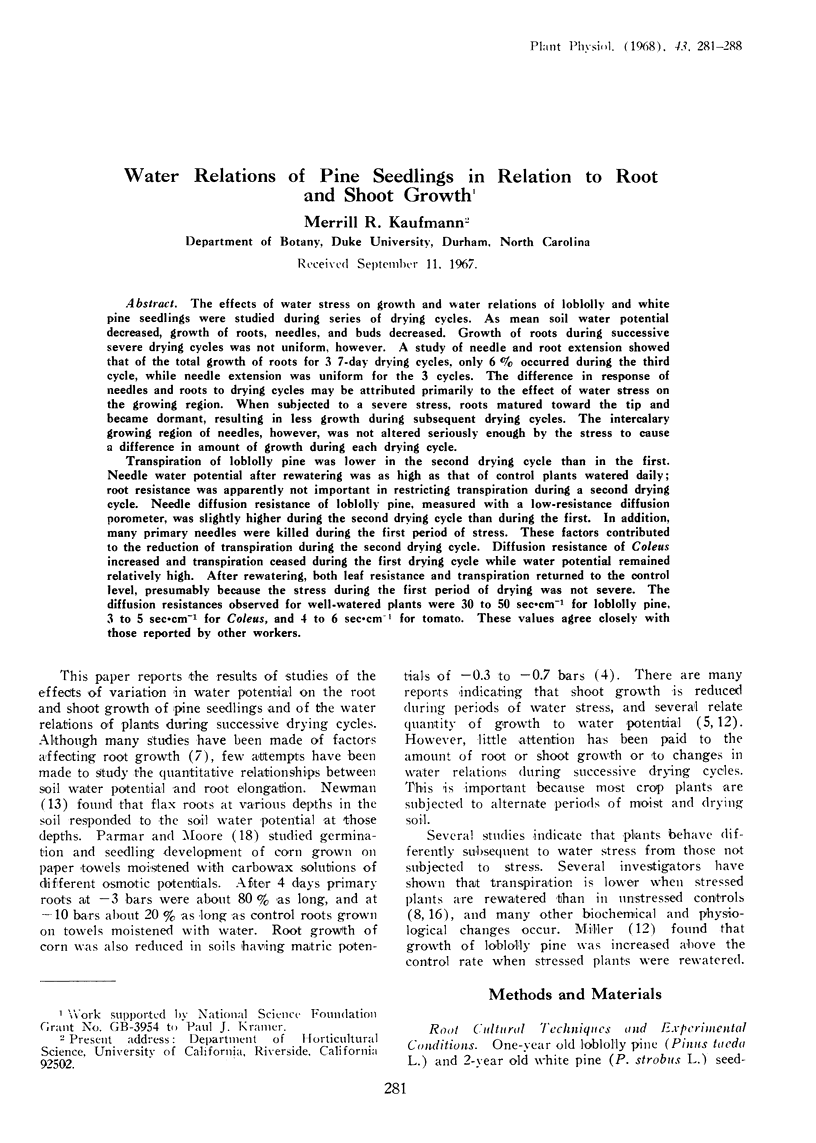
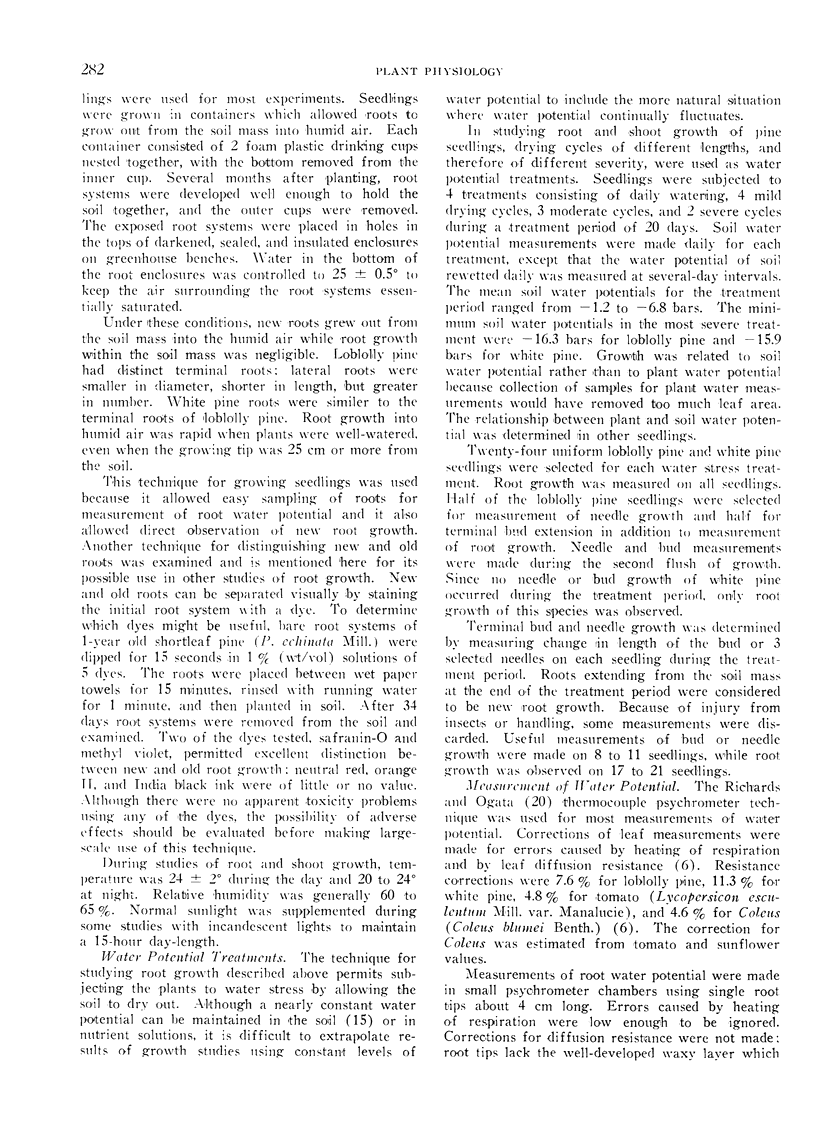
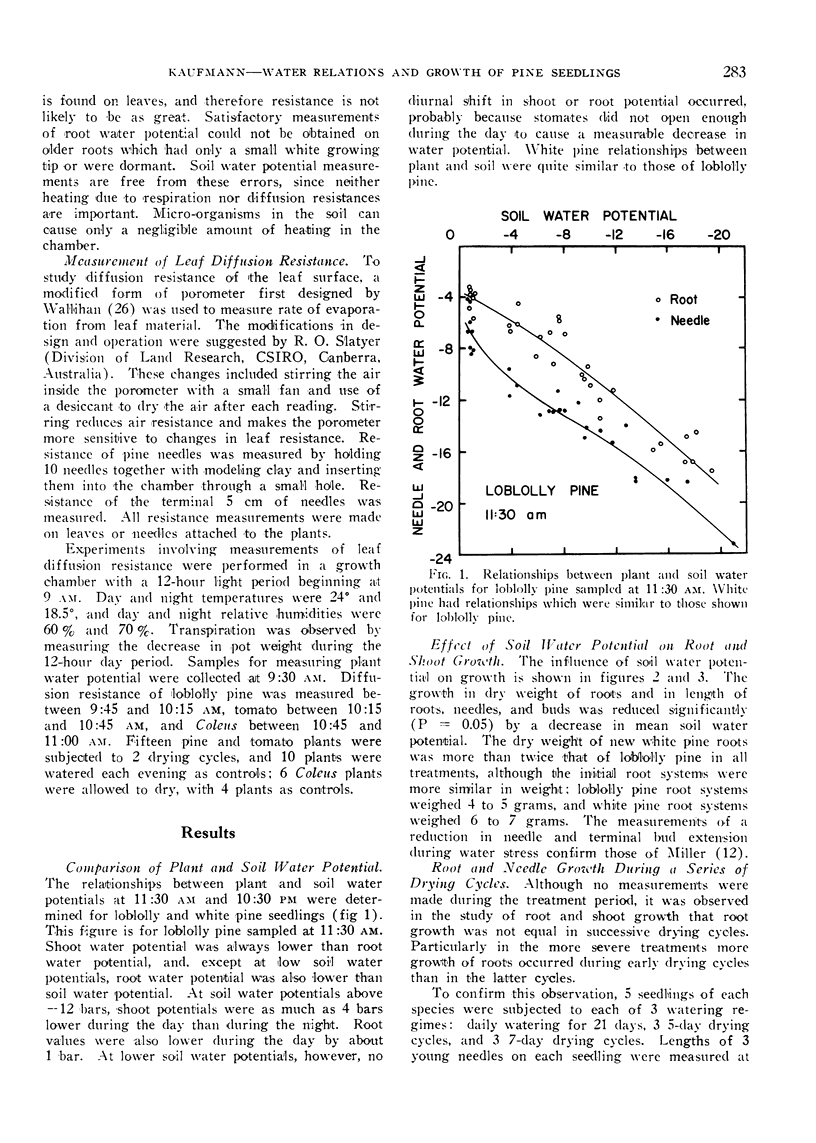
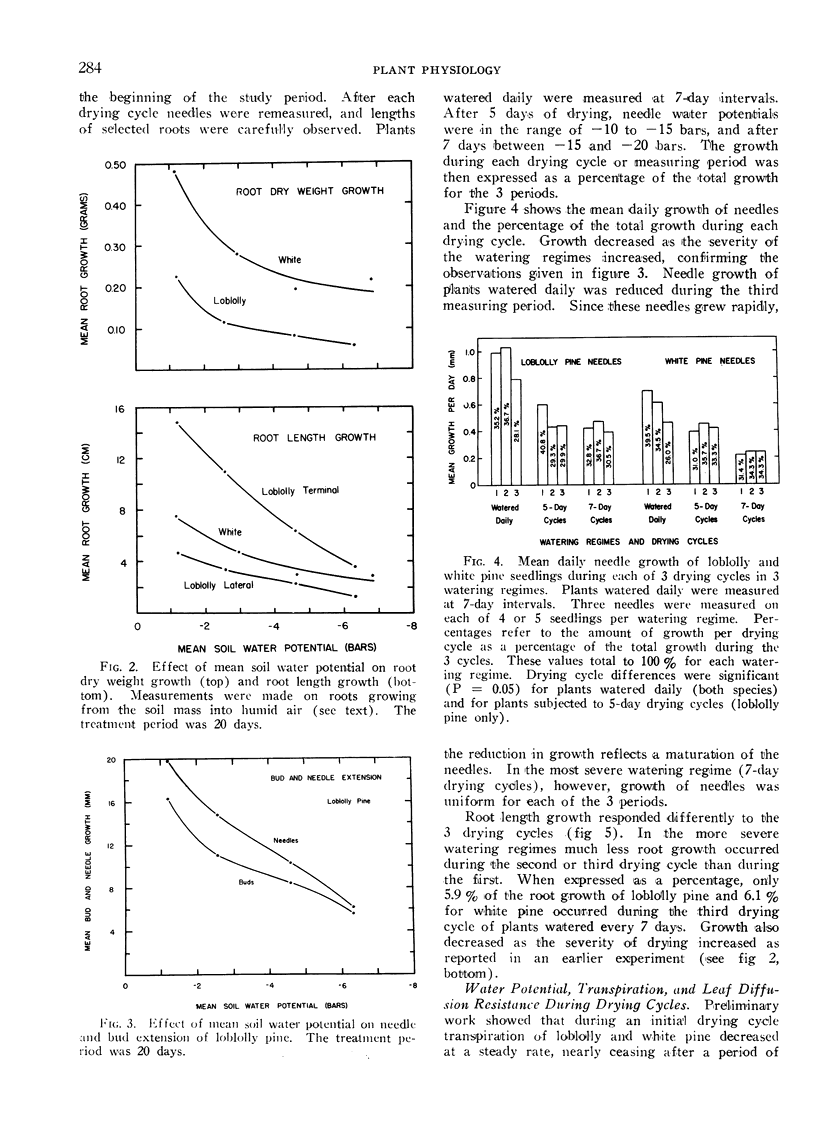
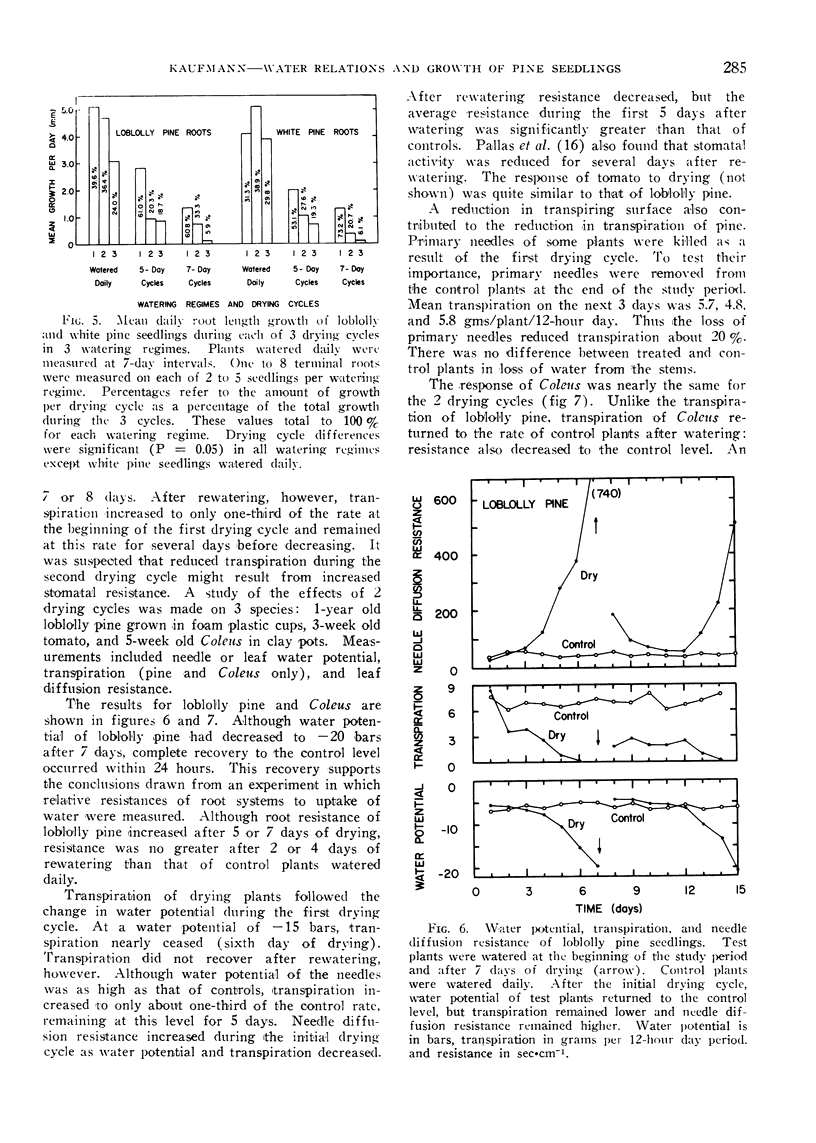
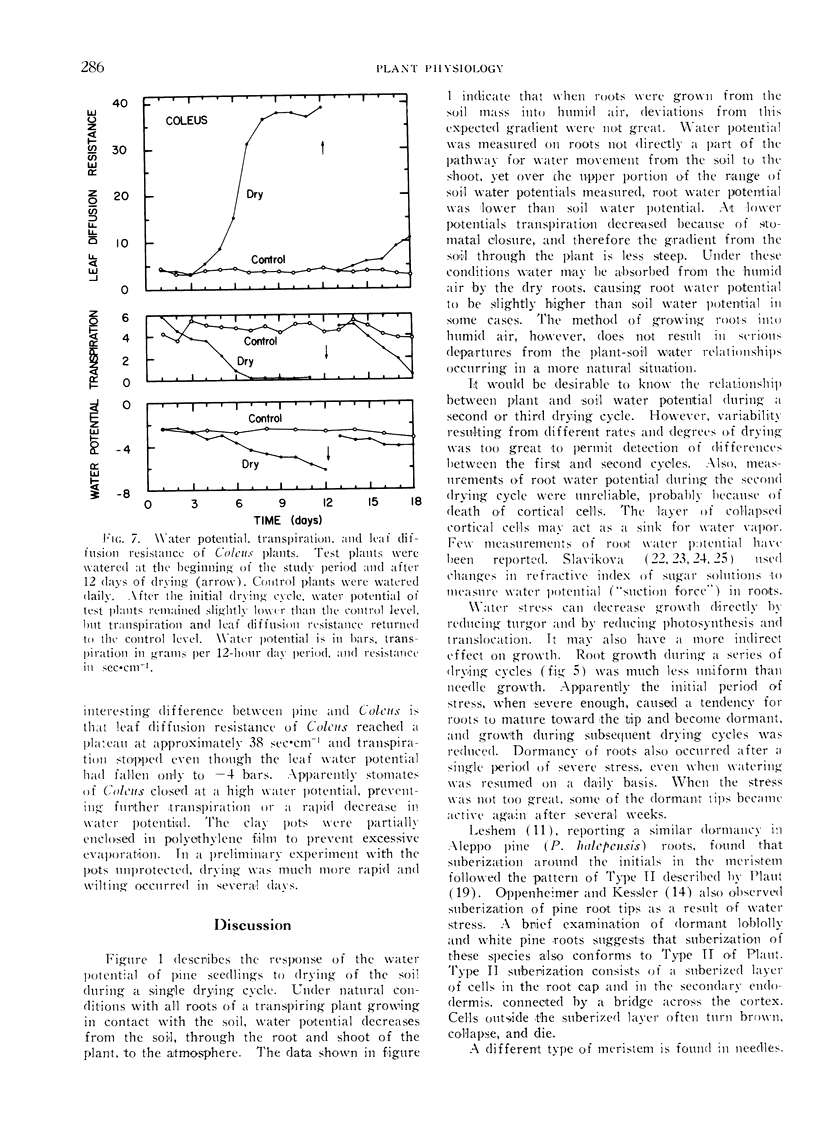
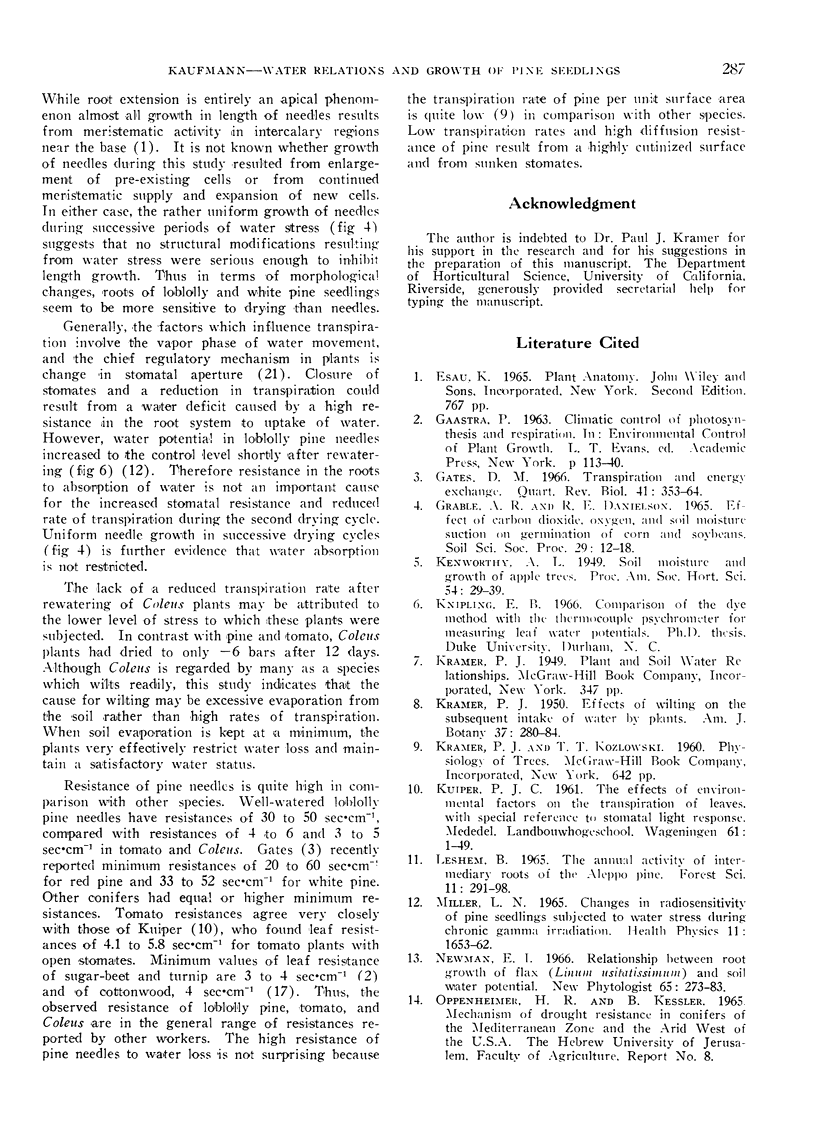
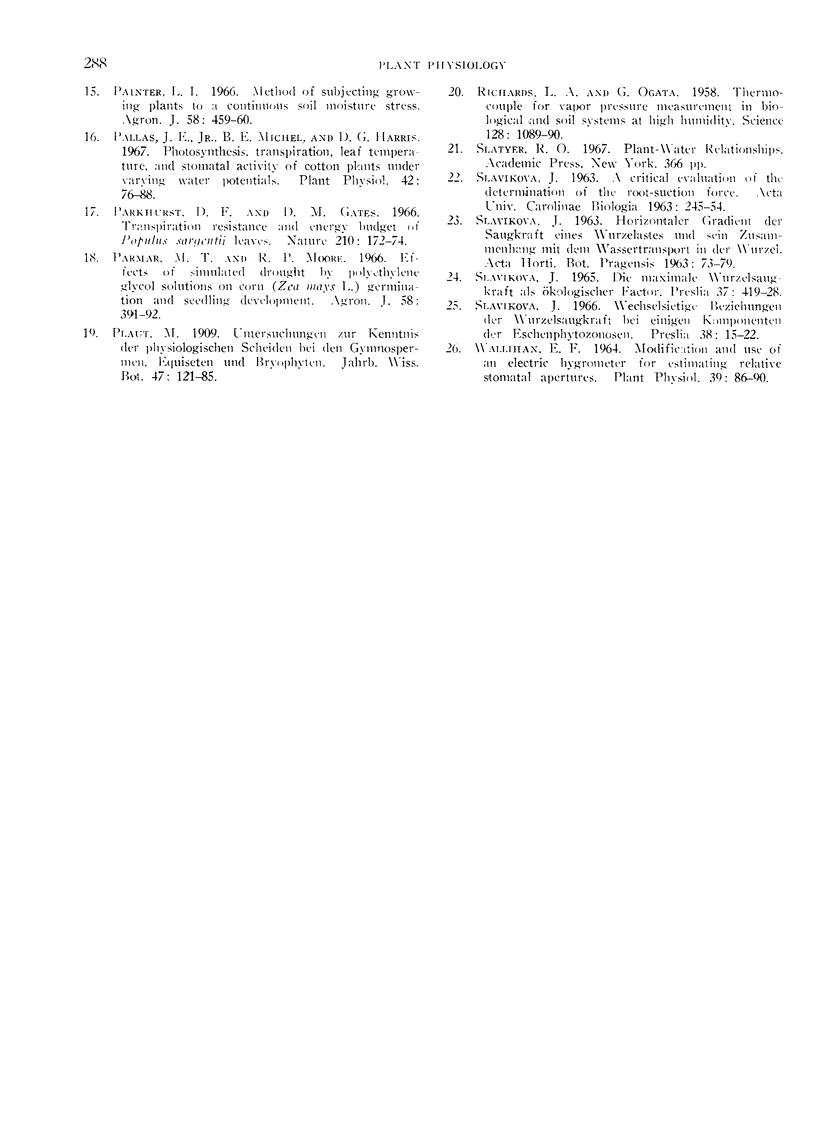
Selected References
These references are in PubMed. This may not be the complete list of references from this article.
- Gates D. M. Transpiration and energy exchange. Q Rev Biol. 1966 Dec;41(4):353–364. doi: 10.1086/405156. [DOI] [PubMed] [Google Scholar]
- Richards L. A., Ogata G. Thermocouple for Vapor Pressure Measurement in Biological and Soil Systems at High Humidity. Science. 1958 Oct 31;128(3331):1089–1090. doi: 10.1126/science.128.3331.1089. [DOI] [PubMed] [Google Scholar]


